- Home
- Lin Carter
The Volcano Ogre
The Volcano Ogre Read online
Table of Contents
Dedication
Note:
CHAPTER 1 — The Burning Troll
CHAPTER 2 — The Nonplussing of Doc
CHAPTER 3 — At the Cobalt Club
CHAPTER 4 — Damsel in Distress
CHAPTER 5 — Fat Man with Mustache
CHAPTER 6 — A Scream in the Night
CHAPTER 7 — The Stone Monster
CHAPTER 8 — Now You See It —
CHAPTER 9 — — And Now You Don’t!
CHAPTER 10 — Back from the Grave
CHAPTER 11 — It Walks by Night
CHAPTER 12 — The Murder Monster
CHAPTER 13 — Introducing Chicago Louie
CHAPTER 14 — The Island Hawkshaw
CHAPTER 15 — Zarkon Vanishes!
CHAPTER 16 — Where Angels Fear to Tread
CHAPTER 17 — The Hidden Cave
CHAPTER 18 — A Secret Passage
CHAPTER 19 — In the Ogre’s Den
CHAPTER 20 — Duel to the Death
CHAPTER 21 — The Ogre Unmasked
CHAPTER 22 — The Gift of the Island
Postscript
This is a work of fiction. All of the characters, organizations, and events portrayed in this novel are either products of the author’s imagination or are used fictitiously.
THE VOLCANO OGRE
Copyright © 1976 by Lin Carter.
Published by agreement with Wildside Press LLC and John Gregory Betancourt.
All rights reserved.
Edited by Dan Thompson
A Thunderchild eBook
Published by Thunderchild Publishing. Find us at https://ourworlds.net/thunderchild_cms/
First Edition: 1976
First Thunderchild eBook Edition: October 2017
Dedication
For Kendall Foster Crossen,
the creator of the Green Lama.
Note:
On the following pages you will find my novelization of the case reported in Omega File 17. The events described here took place during the month of April 1971.
I would like to emphasize that which perhaps does not even require pointing out. I mean, that what follows has been very heavily fictionalized.
I wrote this novelization from photostat copies of the notes on the case recorded in File 17, and from about three hours’ total interview-time with those members of the Omega organization who partook therein and who were available at the time of this writing, early 1975. Since I don’t have a tape recorder memory like Doc Jenkins, I had to actually use a tape recorder.
While the events described in these pages really took place more or less as I describe them, obviously an element of fictionalization had to enter into my account. I don’t know what some of the people on Rangatoa looked like, for instance. And, not having been on the spot, I have been forced to imagine such things as descriptions of the island, the scenes of the events, the tones of voice used, and the expressions on people’s faces, and so on. My dialogue is almost entirely invention: but accurate invention, I hope, based on informed and calculated guesses as to what the characters in this book might have said to each other under the reported circumstances.
Under the terms of my agreement with Omega, all of the personal and place names in this book are my invention. While these people all actually lived, none of their true names are even remotely similar to the names I have given them. This is also true of the locale of the story. There is no such island as Rangatoa in the Pacific Ocean, no chain of islands called the Luzon Group, no such island confederation as the Luzon Union, no capital city named Mantilla, and so on. (In fact, I borrowed some of these names from one of Lester Dent’s Doc Savage novels, called Pirate of the Pacific.)
Prince Zarkon and his five lieutenants and their Omega group actually exist. But their organization is not called Omega, neither is it located where I suggest it is, nor are their true names the same as those I have given them. The man I have decided to call Prince Zarkon makes every attempt to avoid publicity, rather than striving for it. While it is quite true that he and his organization are devoted to the battle against supercrime, the secrecy with which the Omega organization surrounds itself helps to protect it from those who would destroy it.
Those who are in need of help would be advised to look elsewhere for assistance. It is perhaps not generally known, but every large American city contains a local office of the FBI, which is plainly listed in the telephone book. If you need help, seek it from the proper authorities.
This is the third of the cases I have selected from the files of Omega for novelization. Naturally, I have chosen the more fantastic and colorful of the many cases undertaken by this extraordinary organization. Next to Z5 itself, which is, after all, semiofficial, it is generally conceded to be the best and most superlatively efficient private crime-fighting organization in the world today. Part of the reason for its phenomenal success is that it operates in almost complete secrecy; very few in the Underworld learn of its very existence until too late.
For that reason, neither I nor my publishers will pass along to Omega any mail from my readers. I have already had to return over one hundred letters from readers seeking the aid of Zarkon of Omega.
Those desperately in need of Omega’s help should take an advertisement in the personal columns of the Knickerbocker City Daily Sentinel, and should begin their ad with the code phrase Zelda: please contact Box — . Important!
A few notes and observations:
The Cobalt Club exists, and is as I have described it, for Prince Zarkon has taken me there as his guest. However, the rather exclusively legendary membership of the club (for those readers able to see beyond a last name) is only my whimsical sense of humor, which at times is irrepressible.
The battle between Wakuaha and the fire devil, who still sleeps beneath Mount Rangatoa, is a genuine Polynesian legend. Those who would like to know more about it should consult Copeland’s Polynesian Mythology, published in 1906 but still the recognized authority.
The secret of the manufacture of the polymerized-glass fiber, and the technique of vacuum-bubble insulation, both mentioned in this book, were believed to have been lost with the death of their inventor, as described herein. By a rather amusing coincidence, however, even as this volume goes to press a news story in the issue of the New York Times dated April 1, 1975, reports that the Hazzard Laboratories at College Point, Long Island, have rediscovered the secret process and are manufacturing the miracle fabric.
— Lin Carter
P.S. I am greatly indebted to Señor Juan Mindoro II, senior vice-president of the Luzon Islands Tourist Office at 9 Rockefeller Plaza, New York City, for his kind generosity in supplying me with color slides, movie travelogue footage, brochures, and a geological survey map of Rangatoa Island, for my research in writing this book.
Without his cooperation, it would have been much more difficult for me to describe the foliage, native village, volcano, and general scenery of the island in those scenes and chapters which take place on Rangatoa.
-LC
CHAPTER 1 — The Burning Troll
Tarapaho is the largest town on the small Pacific island of Rangatoa. It is also the only town on the island.
It is built along the curved beach of the lagoon, a double row of bamboo huts which march side-by-side the length of the town’s only street, which is a broad lane of beaten earth. This dirt road, at its further end, terminates at the steps leading to Tarapaho’s largest and most imposing building, a two-story trading post maintained by Señor Felipe Valdez, the island’s most prominent citizen. At the other end it dwindles away into a smooth beach of coral sand, where a dock extends out into the blue waters of the Pacific, lazing under a golden morning sun.
&nbs
p; Outrigger canoes were drawn up onto this beach, and a small schooner was anchored off the end of this dock.
Scrawny chickens scratched in the dirt between the huts of the town. A mongrel dog or two slept under the steps to the trading post.
No one, as yet, was abroad. Yesterday evening the people of Tarapaho had held a feast in celebration of the local independence day, the anniversary of the date on which Rangatoa, and the other islands of the group to which it belonged, had won their independence from Spain. Date wine had flowed rather freely, and a whole pig had been roasted in a sandpit on the beach, and the girls of Rangatoa had danced the local equivalent of the hula. Joy, as the saying has it, had been unconfined. So had the supply of drinkables. In honor of the occasion, Felipe Valdez had taken the schooner to a larger island in the chain and brought back a case of Philippino beer and two cases of hard liquor. As a result of the imbibement of these potables, few of the citizens of Tarapaho were astir at this hour.
Which explains why nobody saw Tommy Kahua leave his hut at the end of town and start up the bamboo-covered hills in the direction of the mountain.
Tommy’s outrigger was the long one with the ornate carvings on the prow. He was one of the best fishermen on the island, and usually feasted on his own catch, selling the rest to Señor Valdez, who took it to the larger islands and returned with crisp golden banknotes bearing the seal of the National Bank of Luzon.
But all of the previous afternoon, the succulent and mouth-watering odors of the roasting pig had caressed the nostrils of Tommy Kahua. Roast pig was, he reminded himself, a rare delicacy, and far tastier, on the whole, than even fresh-caught fish. So, in early evening before sundown, and before the celebration began, he had planted home-made traps around the slopes of Mount Rangatoa, where wild pigs were sometimes seen. And this morning he was up bright and early, despite a throbbing brow, to see if Dame Chance had replenished his larder.
Although Tommy Kahua could not have guessed it, this was a serious mistake.
And it was the last mistake Tommy Kahua would ever make.
Mount Rangatoa was an active volcano of rather modest proportions, less than a thousand feet high. A plume of snowy vapors crowned its jagged crest, which could be seen for miles out to sea like a gigantic feather from a roc’s wing. Hence its name, for rangatoa in the Luaua dialect means “white feather.”
There was no particular danger in living in such close proximity to one of these lavaspouters, because, while technically active, the volcano had not had a sizable eruption since 1884, and that one had been the first in a century. So the Rangatoa Islanders, a mixture of general Polynesians, some with Chinese blood and others with more than a little Spanish in their background, felt no fear of the “big fella,” as they affectionately called the local landmark.
But, it was true, there were some odd stories told about the volcano. One of the Polynesian legends current in these islands told that Wakuaha, a mythical warrior who had been adopted by the gods, had imprisoned beneath Mount Rangatoa an evil fire devil. That was in the beginning of time, of course, and before the stars were made. But fire devils, according to the legends, are hard to kill, and the devil lived on, very angry by now, and weary of the enormous weight of the mountain pressing down upon him. It was his hot, angry breath, panting up the flume, that made that drifting feather of white smoke which gave the island its name. And when, from time to time, the earth trembled a little to some minor subterranean convulsion, that was the fire devil, struggling to free himself.
Someday, the legend concluded, he would succeed in breaking free of restraint. On that unhappy day, the fire devil would come down from the mountain to wreak a terrible vengeance on every living thing. But that was someday, of course; not now.
Tommy Kahua had heard these stories, of course, but he paid them no mind. He did not fear fire devils; in fact, he didn’t even believe in them. For Tommy Kahua was an educated young man. He had learned to read (a little) and to write (a little) and even to work with figures (very little) at the Mission school on Huakawki. He was one of the few young men of Rangatoa who had gone to school, and his standing in the small community of Tarapaho had thereby been enhanced. This schooling had been arranged by Señor Felipe Valdez, but not as a charitable gesture. Señor Valdez needed a bright young man to help him run the trading post. This need had become more acute when his only son had been killed by a shark while swimming. Of the local youths, Tommy Kahua had seemed the most eligible. Unfortunately for Señor Valdez, he proved to be one of the laziest, too.
By the time the sun was well up the sky, Tommy had come very close to the top of the mountain. He had checked every trap but one, and all had been empty. He paused here, near the crest, to catch his breath and admire the view. Tree-grown hills rolled away beneath him to the white crescent of the beach, where the lazy Pacific lay rippling in the warm sun. On the other side of the volcano, which rose at the exact center of the island, a bamboo swamp lay, thick and dark. Somewhere along its edge lived “the Yank,” an American geologist here to study the mineral deposits.
Looking down at the beach, Tommy saw that his fellow townsmen were astir and about their morning’s business. In fact, he saw that a crowd was gathered on the beach about the dock. Something was going on down there, and Tommy strained his sharp eyes to make out what it was. A long, sleek motor launch had pulled up to the wooden dock and strangers were disembarking. One of them was a woman, he saw. From this height and distance, all he could make out was the bright lilac of a summer frock, long legs, and the glimmer of long bright hair. But Tommy grinned. He had an eye for the girls, Tommy did. Especially for blondes.
Tommy was so intent on the strangers arriving below that he did not notice the thing until it was almost upon him.
It was the smell that finally dragged his attention away from the sight below.
It was hard to describe, that smell. Hot stone was in it, and burning sulfur. He turned to look —
Here, near the peak, the topsoil had eroded away to naked rock which was actually uncomfortably warm beneath his feet.
A sort of narrow trail was cut through the rock to the crest. Along this path, in the bad old days before the coming of the first white missionaries, Tommy Kahua’s ancestors had come at intervals during the year to give the fire devil a bride. The unfortunate young women chosen for this grim honor were first made drunk with date wine, so that their terrified screams would not mar the dignity of the occasion, then bound with ropes of flowers and flung over the brink of the volcano to a mercifully swift death in the seething vapors of the crater.
These sacrifices were made in order to appease the fire devil that Wakuaha had imprisoned below. The theory was, obviously, that if the girls were pretty enough, the demon would be too busy, or too happy, or both, to bother with the destruction of the village. Apparently, it had worked, for, as I have said, the last serious eruption had been in 1884, before Tommy Kahua’s father was born.
Up this path Tommy stared, nostrils distended at the hot, sulfurous smell of burnt stone.
The path terminated in a wall of drifting smoke and steam, the base of the snowy plume that floated up against the cobalt sky.
And out of this wall of vapor came lumbering a figure so fantastic and so horrible that Tommy almost fainted at a single glimpse of it.
It was a hideous, squat, wide-shouldered, lump-headed thing, bigger and broader than a man. For some crazy reason, Tommy thought of the illustrations of a troll he had seen in a hook of fairy stories back at the Mission school. The thing looked exactly like a troll.
Except that it was covered with molten lava.
Gleaming rivulets of white-hot liquid rock streamed over its mud-colored breast and shoulders and ran dripping down its huge thick ape-like arms, which terminated, he saw, in monstrous paws. Its face, if it possessed one, was hidden from view by a mass of dripping lava.
The molten stone was so hot that it steamed in the air, surrounding the ghastly lumbering monster with clouds of vapor.
Tommy turned as pale as his olive complexion allowed. His eyes rolled back into his head until only the whites showed. He shook all over — arms, legs, head, hands — like a very old man with Parkinson’s disease.
Then he began to run.
But before he began to run, he screamed. Once only. But once was enough. That scream ripped his throat lining, it was so loud. And it was so loud that even the people gathered on the beach heard it, a horrible wailing cry drifting down from above. A cry with so much fear in it that the men and women of Tarapaho froze in their tracks, and more than a few crossed themselves at the sound of it.
It was like the screech a damned soul might give voice to, burning in hell.
The cry had come from the mountain, of course. That was plainly obvious; for it had come from above their heads.
The men began to run in the direction from which the awful cry had sounded. Some of them stopped to snatch up barbed fishing spears or the ornately-carven ceremonial stone clubs that had belonged to their ancestors. They were purely ornamental, those clubs. But you could brain a bull with them.
Before long, they got to Tommy Kahua. But someone ... or something ... had gotten to him first. Gotten to him and seized him from behind, in a thick-fingered grip the size of a baseball mitt, a grip so fiery-hot that it had seared him to the bone. The mark of that monster paw was burnt into the crisp, blackened flesh like the mark of a huge, hand-shaped branding-iron heated red-hot.
Tommy was dying from shock, first-degree burns, and loss of blood. But he still had a little breath in him.
“The ... burning troll,” he gasped faintly. The men looked at one another, fear naked in their eyes. They knew the legends of this mountain.

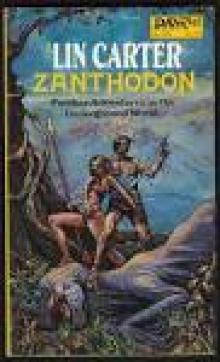 Zanthodon
Zanthodon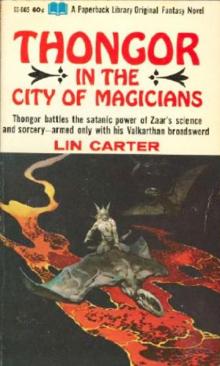 Thongor in the City of Magicians
Thongor in the City of Magicians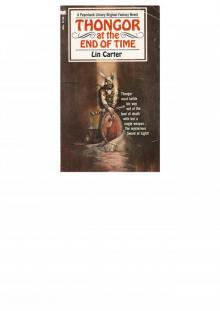 Thongor at the End of Time
Thongor at the End of Time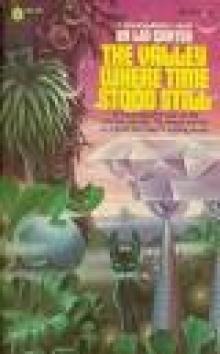 The Valley Where Time Stood Still
The Valley Where Time Stood Still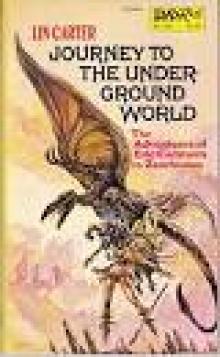 Journey To The Underground World
Journey To The Underground World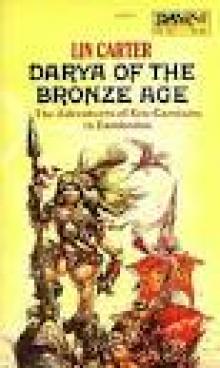 Darya of The Bronze Age
Darya of The Bronze Age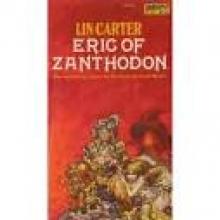 Eric of Zanthodon
Eric of Zanthodon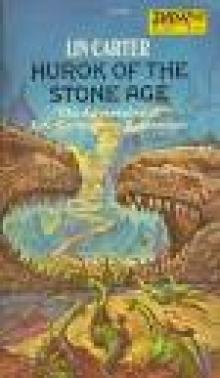 Hurok Of The Stone Age
Hurok Of The Stone Age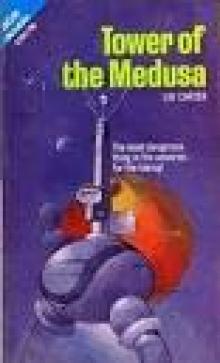 Tower Of The Medusa
Tower Of The Medusa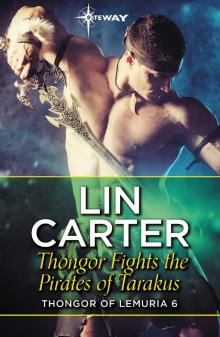 Thongor Fights the Pirates of Tarakus
Thongor Fights the Pirates of Tarakus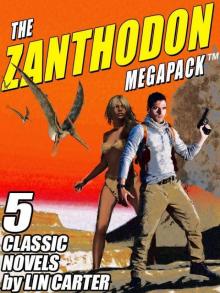 The Zanthodon MEGAPACK ™: The Complete 5-Book Series
The Zanthodon MEGAPACK ™: The Complete 5-Book Series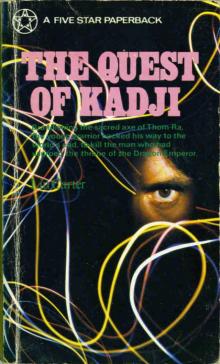 The Quest of Kadji
The Quest of Kadji Lin Carter - The Man Who Loved Mars
Lin Carter - The Man Who Loved Mars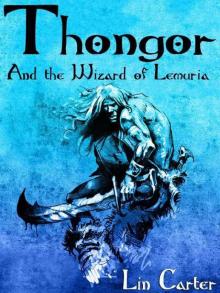 Thongor and the Wizard of Lemuria
Thongor and the Wizard of Lemuria The Nemesis of Evil
The Nemesis of Evil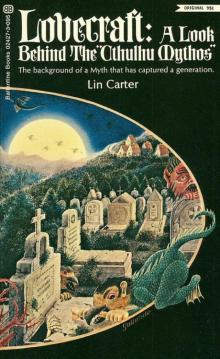 H.P.Lovecraft: A Look Behind Cthulhu Mythos
H.P.Lovecraft: A Look Behind Cthulhu Mythos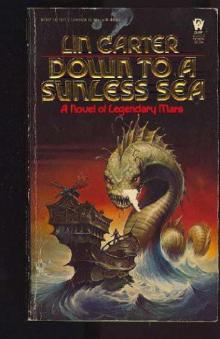 Lin Carter - Down to a Sunless Sea
Lin Carter - Down to a Sunless Sea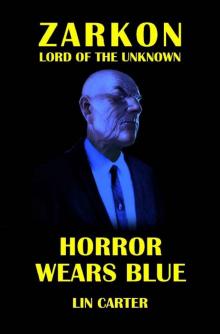 Horror Wears Blue
Horror Wears Blue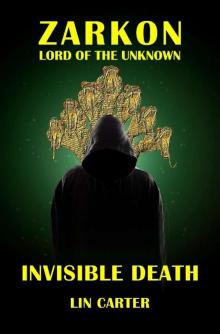 Invisible Death
Invisible Death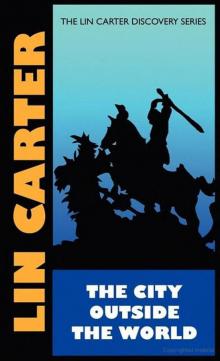 Lin Carter - The City Outside the World
Lin Carter - The City Outside the World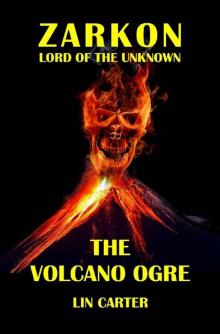 The Volcano Ogre
The Volcano Ogre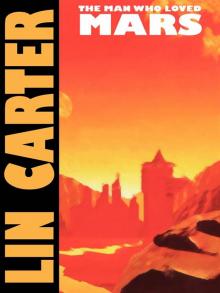 The Man Who Loved Mars
The Man Who Loved Mars